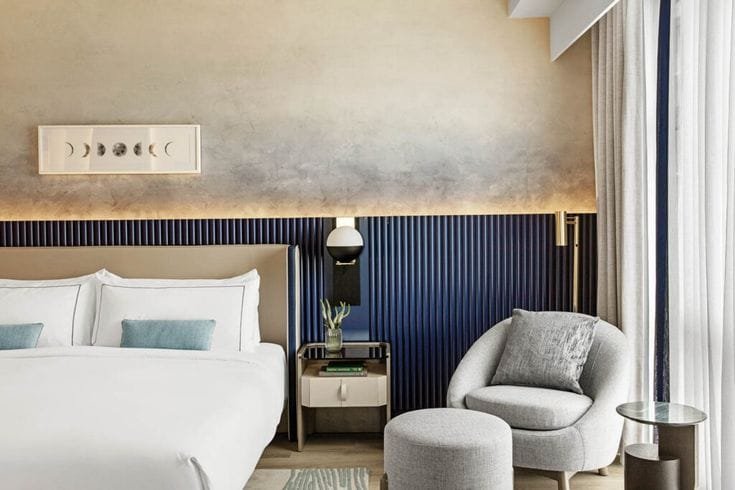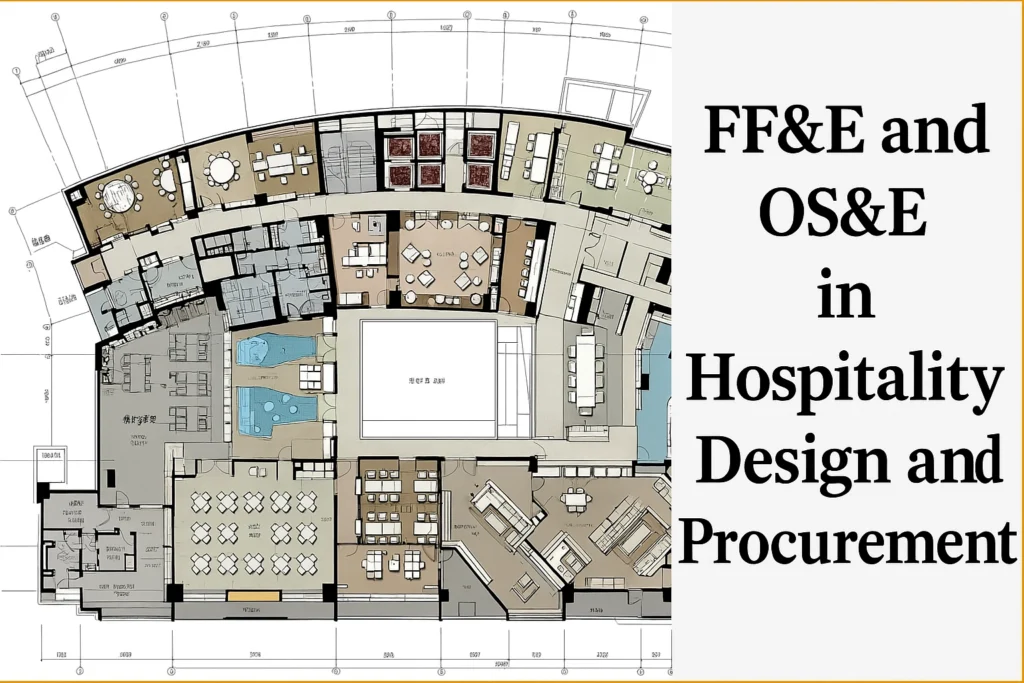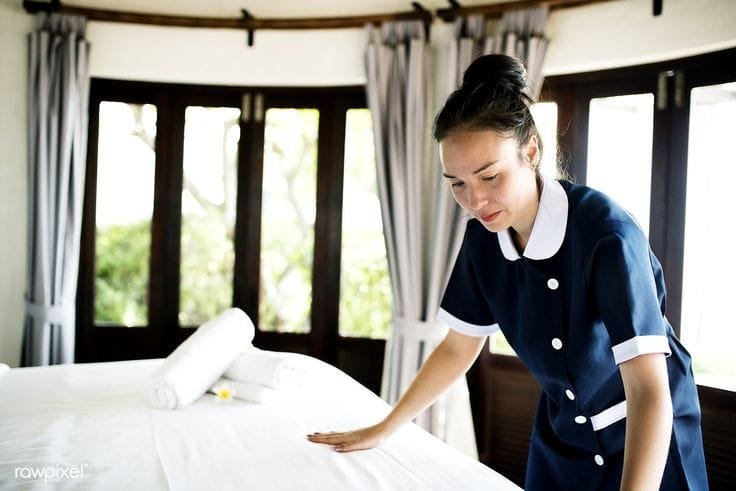
The hospitality industry relies on two critical procurement categories that directly impact guest experience and operational efficiency: FF&E (Furniture, Fixtures, and Equipment) and OS&E (Operating Supplies and Equipment). Understanding the distinction between these categories and implementing effective procurement strategies can significantly reduce costs while enhancing guest satisfaction. This comprehensive guide explores the fundamental differences, procurement processes, budgeting strategies, and best practices for managing both FF&E and OS&E in modern hotel operations.
Understanding FF&E vs OS&E: Core Definitions and Strategic Importance
FF&E encompasses all movable furniture, lighting fixtures, and equipment that create the aesthetic and functional foundation of a hotel. These items include beds, chairs, desks, lighting fixtures, televisions, safes, and artwork that guests interact with directly. FF&E items are typically installed during construction or renovation phases and are expected to last 7-15 years depending on quality and usage patterns.
OS&E represents the consumable and operational items essential for daily hotel operations. This category includes bedding, linens, toiletries, tableware, cleaning supplies, and kitchen utensils that require regular replacement. OS&E items are crucial for maintaining service standards and hygiene requirements while supporting staff productivity.

The strategic importance of distinguishing between these categories lies in their different procurement timing, budget allocation, and replacement cycles. FF&E typically represents 8-12% of total project costs for new hotel developments, while OS&E accounts for ongoing operational expenses that can significantly impact profit margins.
Table 1: FF&E vs OS&E Comparison Matrix
| Aspect | FF&E | OS&E |
|---|---|---|
| Lifespan | 7-15 years | 6 months – 3 years |
| Budget Impact | High initial investment | Recurring operational costs |
| Procurement Timing | Pre-opening/renovation | Ongoing/pre-opening |
| Replacement Frequency | Periodic major updates | Regular replenishment |
| Guest Visibility | High visibility items | Mixed visibility |
Procurement Processes and Timeline Management
FF&E procurement follows a structured timeline that begins 12-18 months before hotel opening. The process involves initial scope definition, supplier selection, custom design development, manufacturing coordination, and installation planning. Effective FF&E procurement requires early coordination with interior designers, brand standards compliance, and careful quality control throughout the manufacturing process.
The FF&E procurement process typically includes six critical phases: project kickoff and scope definition, supplier selection and contract negotiation, design development and approval, manufacturing and quality control, logistics and delivery coordination, and installation and final inspection. Each phase requires specific milestones and quality checkpoints to ensure project success.
OS&E procurement operates on shorter cycles with emphasis on operational continuity and cost optimization. Unlike FF&E, OS&E procurement focuses on establishing reliable supplier relationships, implementing inventory management systems, and creating efficient replenishment processes. Hotels typically begin OS&E procurement 3-6 months before opening, with ongoing procurement continuing throughout operations.
Table 2: Procurement Timeline Comparison
| Phase | FF&E Timeline | OS&E Timeline |
|---|---|---|
| Initial Planning | 18 months before opening | 6 months before opening |
| Supplier Selection | 12-15 months before | 3-4 months before |
| Order Placement | 8-10 months before | 2-3 months before |
| Delivery Coordination | 2-4 months before | 1 month before |
| Installation/Setup | 1-2 months before | 2-4 weeks before |
Case Study: Luxury Resort FF&E Procurement
A 300-room luxury resort in Hawaii implemented a comprehensive FF&E procurement strategy that included local artisan partnerships for custom furniture pieces, sustainable material sourcing, and phased delivery coordination. The project achieved 15% cost savings through strategic supplier negotiations while maintaining premium quality standards and supporting local craftspeople.
Budgeting Strategies and Cost Optimization
FF&E budgeting requires sophisticated analysis of multiple cost factors including hotel size, property class, customization levels, and brand requirements. Luxury hotels typically allocate $25,000-$50,000 per room for FF&E, while mid-scale properties budget $8,000-$15,000 per room. These budgets must account for furniture, lighting, artwork, technology integration, and installation costs.
Geographic location significantly impacts FF&E costs due to shipping expenses, local labor rates, and material availability. Hotels in remote locations may experience 20-30% higher costs due to logistics challenges, while properties in major metropolitan areas benefit from competitive supplier networks.
OS&E budgeting focuses on operational efficiency and ongoing cost management rather than one-time capital investments. Effective OS&E budgeting includes initial inventory setup costs, ongoing replenishment expenses, and contingency funds for unexpected operational needs. Hotels typically budget 2-4% of annual revenue for OS&E procurement and replacement.
Table 3: FF&E Budget Allocation by Hotel Category
| Hotel Category | Per Room Budget | Furniture % | Fixtures % | Equipment % | Installation % |
|---|---|---|---|---|---|
| Luxury/Five-Star | $35,000-$50,000 | 45% | 25% | 20% | 10% |
| Upper Upscale | $20,000-$35,000 | 50% | 20% | 20% | 10% |
| Upscale | $12,000-$20,000 | 55% | 18% | 17% | 10% |
| Upper Midscale | $8,000-$12,000 | 60% | 15% | 15% | 10% |
Cost optimization strategies for FF&E include bulk purchasing negotiations, standardized design elements across room types, and strategic timing of procurement activities. Hotels can achieve 10-20% cost savings through consolidated purchasing programs and long-term supplier partnerships.
Case Study: Boutique Hotel Chain OS&E Optimization
A 50-property boutique hotel chain implemented centralized OS&E procurement, achieving 25% cost reductions through volume purchasing while maintaining individual property character. The program included standardized linen specifications, consolidated supplier relationships, and predictive inventory management systems.
Quality Standards and Compliance Requirements

FF&E quality standards must balance durability, aesthetics, and safety compliance to ensure long-term performance in high-traffic hospitality environments. Commercial-grade furniture requires specific material specifications including flame-resistant upholstery, reinforced joinery, and certified safety compliance. Hotels must verify that all FF&E items meet local fire safety codes, accessibility requirements, and brand standards.
Material quality assessment involves evaluating construction methods, finish durability, and maintenance requirements. Solid wood furniture with proper joinery typically provides 12-15 year lifespans, while engineered materials may require replacement every 7-10 years. Hotels should specify expected durability standards and warranty requirements in procurement contracts.
OS&E quality standards focus on hygiene, durability under frequent washing, and guest comfort. Linens and towels must meet specific thread counts, fabric compositions, and colorfastness requirements to maintain appearance and comfort standards. Kitchen equipment and tableware require food safety certifications and commercial-grade construction.
Table 4: Quality Standards Comparison
| Category | FF&E Requirements | OS&E Requirements |
|---|---|---|
| Safety Compliance | Fire safety, ADA compliance | Food safety, hygiene standards |
| Durability Testing | Commercial-grade stress testing | Wash cycle testing, wear resistance |
| Material Standards | Specified wood grades, metal finishes | Thread counts, fabric composition |
| Warranty Periods | 3-10 years depending on item | 6 months – 2 years |
| Maintenance Requirements | Periodic professional care | Daily cleaning, regular replacement |
Quality control processes should include pre-production samples, factory inspections, and delivery verification procedures. Hotels that implement comprehensive quality control programs report 30-40% fewer warranty claims and extended furniture lifespans.
Case Study: International Hotel Brand Quality Standards
A major international hotel brand developed standardized FF&E specifications that reduced quality variations across 500+ properties while achieving 12% cost savings through volume purchasing. The program included mandatory supplier certifications, third-party quality inspections, and standardized installation procedures.
Maintenance and Asset Management
Preventive maintenance programs significantly extend FF&E lifespan while preserving aesthetic appeal and guest satisfaction. Hotels implementing systematic maintenance schedules report 40-60% longer furniture lifespans compared to reactive maintenance approaches. Maintenance programs should include daily cleaning protocols, weekly inspections, quarterly professional treatments, and annual comprehensive assessments.
FF&E asset management requires tracking acquisition dates, maintenance history, condition assessments, and replacement planning. The average furniture asset lifecycle in hospitality is seven years, but high-quality pieces with proper maintenance can achieve 10-15 year lifespans. Hotels should implement asset tracking systems that monitor usage patterns, maintenance costs, and replacement schedules.
OS&E inventory management focuses on usage forecasting, automated reordering systems, and cost control. Effective OS&E management includes tracking consumption patterns, maintaining optimal stock levels, and implementing quality control procedures for incoming supplies. Hotels typically maintain 30-60 days of OS&E inventory depending on supplier reliability and seasonal fluctuations.

Table 5: Maintenance Schedule Framework
| Maintenance Type | FF&E Frequency | OS&E Frequency | Cost Impact |
|---|---|---|---|
| Daily Cleaning | All guest areas | All operational items | Low |
| Weekly Inspection | High-use furniture | Linen inventory | Low |
| Monthly Deep Clean | Upholstered items | Kitchen equipment | Moderate |
| Quarterly Treatment | Wood furniture, metal fixtures | Deep cleaning supplies | Moderate |
| Annual Assessment | Complete inventory | Supplier performance | High |
Technology integration in asset management includes RFID tracking, predictive maintenance algorithms, and automated reordering systems. Hotels using advanced asset management systems report 15-25% reductions in maintenance costs and improved guest satisfaction scores.
Case Study: Resort Chain Asset Management Program
A 25-property resort chain implemented comprehensive asset management including preventive maintenance scheduling, condition tracking, and centralized procurement. The program achieved 35% reduction in furniture replacement costs and improved guest satisfaction scores by 12% through better-maintained facilities.
FAQ Section
What is the typical budget allocation between FF&E and OS&E for a new hotel?
FF&E typically represents 8-12% of total project costs for new hotel construction, while OS&E represents 2-4% of the initial setup budget. For a $10 million hotel project, FF&E might account for $800,000-$1.2 million, while initial OS&E setup could require $200,000-$400,000. The exact allocation depends on hotel category, with luxury properties dedicating higher percentages to FF&E for custom design elements.
How do brand standards impact FF&E and OS&E procurement decisions?
Brand standards significantly influence both FF&E and OS&E procurement by establishing specific requirements for materials, colors, suppliers, and quality levels. FF&E standards often mandate specific furniture designs, fabric specifications, and installation methods to maintain brand consistency. OS&E standards typically focus on linen quality, amenity brands, and service delivery requirements. Compliance with brand standards may increase procurement costs by 10-20% but ensures brand consistency and guest expectations.
What are the key differences in supplier relationships for FF&E versus OS&E?
FF&E supplier relationships focus on design collaboration, custom manufacturing capabilities, and project-based partnerships. These relationships often involve longer-term contracts with specific delivery milestones and quality guarantees. OS&E supplier relationships emphasize reliability, consistent quality, and efficient replenishment systems. OS&E suppliers typically provide ongoing service agreements with automated ordering and inventory management support.


